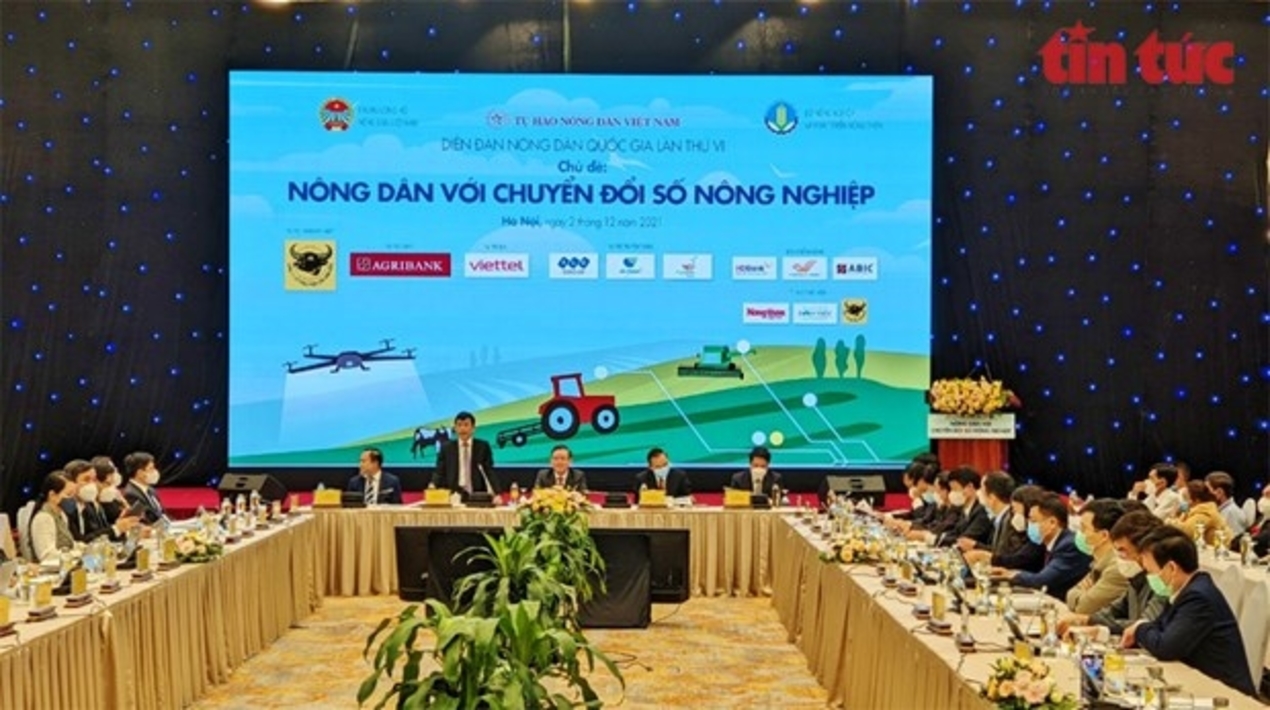
The Ministry of Agriculture and Rural Development in collaboration with the Vietnam Farmers’ Union (VFU) recently held the sixth National Farmers’ Forum themed “Farmers with Agricultural Digital Transformation”. Speaking at the event, the Deputy Minister of Agriculture and Rural Development, Phung Duc Tien, noted that the country now has 4.1 million hectares for agricultural production. Each year, Vietnam earns over US$40 billion from agro-forestry-fisheries exports for 180 countries and territories. Data from this needs to be digitalised to serve production and value chains and help farmers adapt to the digital era.
According to a news report, the Chairman of the VFU Central Committee, Luong Quoc Doan, said that digital transformation has become a compulsory requirement for each country, sector, and individual amid the COVID-19 pandemic. As a backbone of the national economy, digital transformation in agriculture will be one of the crucial factors to help farmers, farms, cooperatives, and businesses. It will improve their productivity and quality, optimise production, cut costs, and increase profits, contributing to the success of the national digital transformation.
The Vice-Chairman of the Bac Giang provincial People’s Committee noted that over 8,000 tonnes of lychees have reached the hands of consumers at home and abroad via e-commerce sites. The province also encouraged businesses and cooperatives to open stalls on domestic e-commerce sites and successfully held teleconferences with 30 locations at home and abroad to promote lychee consumption, he said. Vietnam has taken the initial steps in agriculture digitalisation.
According to a survey of over 130 rice, fruit, coffee, and vegetable farmers, 42% of them intend to switch to digital agriculture. Meanwhile, 89% of the Vietnamese citizens are using mobile phones and 68% of them are smartphone users, presenting great opportunities for farmers to apply advanced agriculture technologies.
Earlier this year, the Ministry of Information and Communications (MIC) approved an e-commerce plan to boost the sale of farm produce and accelerate distribution to avoid congestion during harvesting season. It aimed to keep farm produce prices stable and eliminate intermediary merchants. Two sites, Postmart and Vo So, have been assigned to place farm produce on sale. Farmers will be trained in digital skills. They will learn how to operate in the digital environment; how to register accounts to display products on the sites; and how to register online payment accounts and implement the process of packaging, connection, and delivery.
In August, MIC unveiled a plan to put farming households on e-commerce sites. Farming households will be supported to enter e-commerce sites to connect, advertise, and introduce their products. This will help them access new distribution channels and expand to domestic and international markets. Vietnam has nine million agricultural production households and four million private business households. All the households will be brought onto e-commerce sites, and this will be the first breakthrough to be made in developing the digital agricultural economy.
As OpenGov Asia reported, through e-commerce sites and digital platforms, farming households will receive useful information about farm produce markets, predicted demand and production capacity, weather forecasts, and seed and fertilizer supply. High-quality input materials and tools for agriculture production will be introduced to farmers via the platforms. Overall, MIC will put 12-13 million agricultural production and private business households on e-commerce sites. The targeted figure is five million households by the end of the year.
















